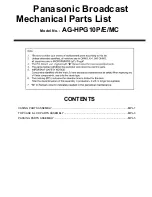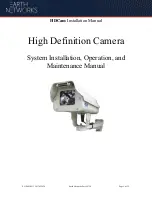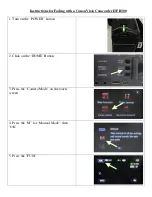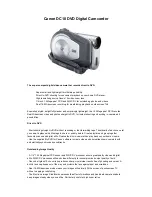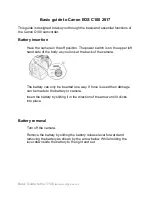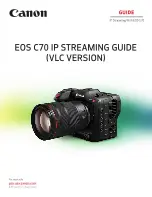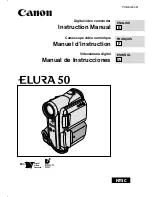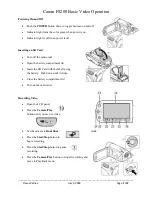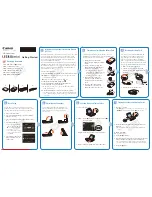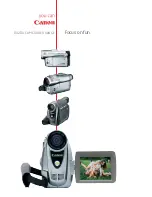
iPCAM-WL Low-Light Wireless Internet Video Camera – Quick Installation Guide
For Online Support visit: http://www.security.honeywell.com/hsc/resources/MyWebTech/
General Information
This guide provides information on installing and setting up Honeywell's iPCAM-WL camera.
This camera is ideal for monitoring your home, business or public facilities. Some major
features of this camera are:
•
Automatic low-light function (0 Lux level) supported by a special night lens and IR LEDS.
•
Wired or Wireless communications to a router or access point. Wireless communications
utilizes the 802.11n protocol with WPS security. WPS (Wi-Fi Protected Setup) is a standard
for easy setup of a secure wireless network.
•
Color video can be monitored through your Total Connect remote services account. Up to
6 cameras can be used.
IMPORTANT: This camera is for indoor use only. DO NOT mount this camera within one foot
(0.3m) of any wireless device.
To utilize this camera, you must have:
•
An AlarmNet account for a GSM or Internet communicator, or a “Video Services Only”
account.
•
Total Connect account. (If an account does not exist, the dealer should use the AlarmNet
Direct website to set up a Total Connect account for the customer.)
•
Internet access with a router capable of DHCP hosting. For wireless, the router must also
support one button WPS data encryption. If this is not available, order the Honeywell
WAP-PLUS Wireless Access Point for connection to your router.
PACKAGE CONTENTS
Camera and Stand
Additional items:
Mounting plate, built into stand.
•
Ideal for wall or ceiling mounting.
•
Can be detached by depressing the
Unlock button.
•
Detach and use as a drilling template,
then fasten to surface with screws.
Power transformer (4.5 ft., 1.3m).
Power extension cable (10 ft., 3m).
Component Identification
POWER indicator
NETWORK indicator
•
Blinking Green – Camera initializa-
tion period, allow up to 2 minutes.
•
Steady Green – Camera is initialized
and power is on.
•
Steady Green – Network is present.
•
Blinking Green – Network transfers.
•
Blinking Amber – WPS configuration is in process.
•
Steady Amber – WPS fault.
Planning the camera installation
A camera installation can be as simple as installing one camera, or up to six cameras per
Total Connect account. In large installations it may include a mix of wireless, and wired cameras.
The installer should work closely with the customer to achieve a satisfactory installation.
Wireless Range:
The wireless range and bandwidth (data rate) are dependent on the wireless
technology used; as determined by the 802.11b/g/n specifications. This deter-
mines the range and data transfer rate. For instance under ideal conditions,
802.11 g provides up to 125 ft. (38m) range, and 54Mbits/s data rate, and
802.11 n provides up to 230 ft. (70m) range, and 150Mbits/s data rate.
Other factors that reduce the range are thick walls, wire lath, large metal objects,
and the number of cameras sending data.
Because of the many variables, the best way to determine if the installation is
successful, is to test the finished installation by logging into the Total Connect
website and checking each camera.
Layout Considerations:
•
Depending on layout and distances, one or more WAP-PLUS units may be needed.
•
Wireless distance may be reduced by thick walls, wire lath, and large metal objects. For
installations where wireless connectivity is poor, see if the WAP-PLUS has the newer WAP-
ANT5dB antennas. They are approximately 6 inches (15cm) long. If not, they can be ordered
to retrofit the WAP-PLUS.
•
When setting up a wireless configuration in very large buildings or buildings with dense walls,
wireless communications may be marginal. It is best to first configure the system’s wireless
security in the same room (within 20 feet, 6m). Then upon successful configuration, place
each camera in the desired location, and verify in Total Connect that everything works.
•
For installations where multiple WAP-PLUS units are used, label the units to indicate which IP
cameras are linked to which WAP-PLUS.
•
Each IP camera or ACU (Analog Converter Unit) will communicate through its associated
WAP-PLUS.
•
Each WAP-PLUS must be spaced at least 4 feet (1.2m) from other wireless devices.
•
Ensure each device uses the correct power transformer. When needed, secure wires with
cable ties.
•
Refer to the installation guides for the WAP-PLUS, ACU (Analog Converter Unit), and each IP
camera for detailed information about that product.
LAN Connector – Used
for wired connectivity.
POWER Connector
Night Mode Lens (top)
Day Mode Lens (bottom)
Fixed lenses require no focus-
ing. Clean with a soft tissue
and lens cleaner.
Ambient Light Sensor –
Depending on light level,
enables automatic switching
to Night Mode Lens.
WPS/RESET Button –
•
WPS function, used during setup
to configure wireless encrypted
connectivity.
•
Reset function, resets camera to
default settings. Depress and
hold for 12 seconds, then
RELEASE.




